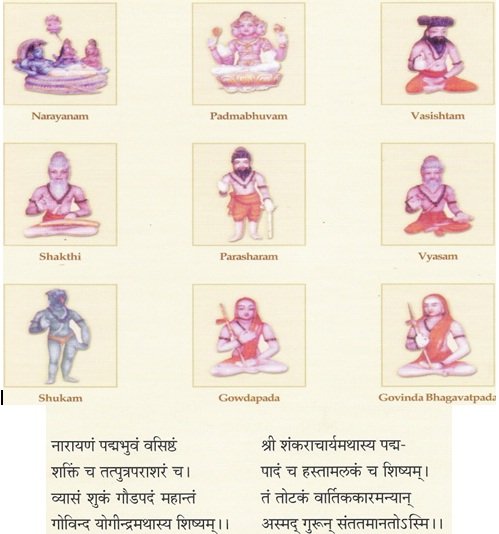Preceptors of Advaita 42 DHARMARAJADHVARIN In the great line of post Sankara Advaita thinkers Dharmaraja has a definite and important place and his contribution to the aids for rational understanding of Advaita is considerable and significant. He is assigned to the 17th century A.D. He belongs to the village Kandramanikkam of the Tanjore district in South India. Dharmaraja was a great scholar of Nyaya and Vedanta and enjoyed great reputation as a scholar who wrote a number of works some of which have not yet been traced. His works include a commentary on Gangesa’s Tattvachintamani. His greatest work is the epistemological manual of Advaita called Vedantaparibhasha. His work has been the gateway for understanding the essentials of Advaita-vedanta, from the point of view of epistemology (pramanasastra). His work is an excellent account of Advaita, under two heads, theory of knowledge and ontology. He develops the theory of knowledge portion in seven chapters and in the last two chapters he describes the ontological categories. Dharmaraja’s work has brought to the forefront the fact ignored by many that Advaita is not based on mere facile intuition founded on scriptural declarations. It is a system of thought that can be logically sustained and interpreted so as to secure, intelligibility to the reader. The pre-occupation of Indian thinkers with the concept of moksha has kept away from the view of many, rich logical material of the system. A study of the logical treatises of the system is not only capable of regaling the most ardent lover of metaphysics but also on occasions baffles the expert. The logical approach does not lead to any other end. Sri Sankara raises the question “whether Advaita can be established only by scriptural evidence or whether it can be proved by reasoning as well.” He writes, ‘How it is possible to prove the validity of Advaita by reasoning’ is shown in the chapter on Advaita1. The acharya has always asked us to be critical and not accept things blindly. He holds “that any-one who adopts any view without full inquiry will miss his aim of beatitude and incur grievous loss2.” In this context it becomes clear to us how important epistemology is for understanding any philosophical system. It is the “portal to metaphysics.” What the pramanas cannot teach us is not knowledge in the normal sense. Scripture becomes authoritative only because its truth gets affirmed by experience. Dharmaraja makes a detailed study of all the problems of knowledge in his manual which continues to be the standard invaluable treatise on the subject. Dharmaraja explains the following problems: -–What is the nature of knowledge? What is its origin? How does it arise? What are its instruments? How is the sense-object related to the cognizer? What is the test of the validity of cognition? What causes illusion? How is non-existence known? What is the way to the knowledge of ultimate Reality? 3. Knowledge in the primary sense of the term is pure consciousness beyond the relativity of the knower and the known. It illuminates all objects. It is self-luminous and self-existent. It is non-relative and non-dual. All the instruments of knowledge function because of it. The soul is the combination of the sakshi and antahkarana. It is the complex form and it is the empirical soul which knows and moves in the world. Knowledge in this system is expressed in the form of vrittis, which is a blend of internal organ and sakshin. It is antahkarana alone that undergoes modal transformations and it is termed vrittijnana. The vritti flows out in the case of external objects and gets itself determined by the object or it assumes the form of the object itself. When the vritti coincides with the object we have knowledge. The fact that a single consciousness principle is delimited as object and as subject and as the knowing process leads to the avoidance of the problems of dualism. It is difficult to cover all the important issues raised by the author. Nothing can replace the study of the manual itself. The system has accepted six instruments of knowledge. 1) pratyaksha (perception), 2) anumana (inference), 3) sabda (verbal testimony) 4) upamana (comparison) 5) arthapatti (presumption) and 6) anupalabdhi (apprehension of non-existence). Each of the pramanas is treated in detail. The chapter on perception is the most difficult. Brahman-realisation is likened to perceptual knowledge. It is not the perceptual knowledge which implies the intervention of the sense organ. It is self-knowledge. The problem whether ‘mind’ is a sense organ is discussed. The two schools, Bhamati and Vivarana, hold different views on the subject. The necessity for regarding upamana, arthapatti and anupalabdhi as independent pramanas is discussed along with the arguments to prove that they cannot be brought under inference or perception. The work of Dharmaraja has attracted the academic students of Advaita of our universities and it has been the subject of many English works. The contribution of Dharmaraja has given us a right royal approach to the study of Advaita. Among the important works in English that are based on Dharmaraja’s book are Professor Datta’s The Six Ways of Knowing (1932): Swami Satprakashananda’s Methods of Knowledge (according to Advaita) with an introduction from Dr. T.M.P. Mahadevan and foreword from Dr. Huston Smith (1965); N.K Devaraja’s An Introduction to Sankara’s theory of Knowledge (1962). Besides these works we have Standard English translations of Dharmaraja’s Vedantaparibhasha by Professor S.S. Suryanarayana Sastri and Swami Madhavananda. Among the great interpreters of Advaita Dharmaraja occupies an illustrious position; and the study of his work confirms the rationality of the system and fullness of its treatment.
1. advaitam kim agamamatrena pratipattavyam ahosvit tarkenapi ityata aha sakyate tarkenapi jnatum.. 2. tatra avicharya yat kinchit pratipadyamano nisreyasat pratihanyeta anartham cha iyat. 3. Swami Satprakashananda, Methods of Knowledge (according to Advaita), 1965, p. 15.
Preceptors of Advaita - Other Parts:
|
